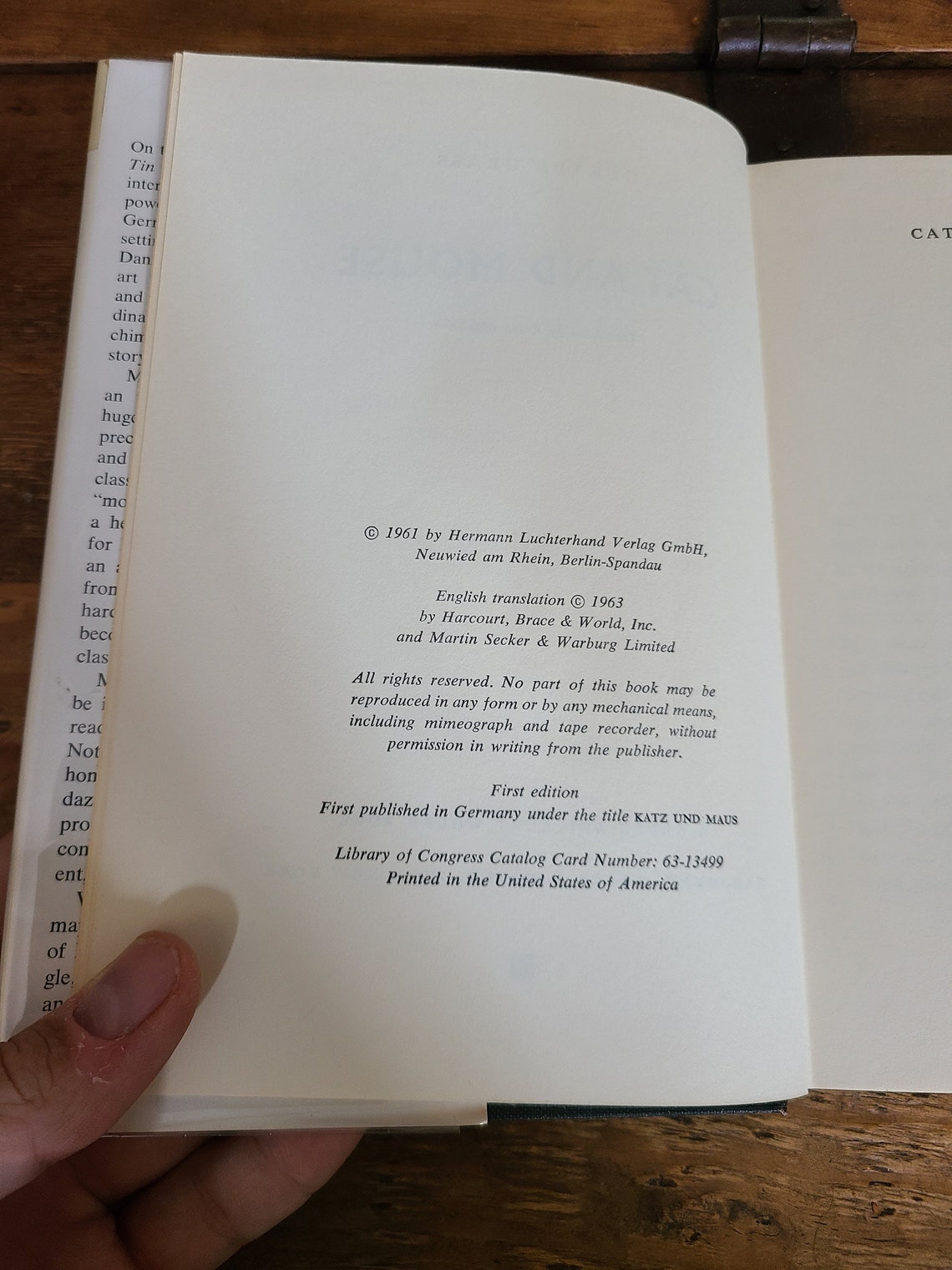

Martin Swales, ‘The Cultishness of the Times: Günter Grass’, in Martin Swales, Studies of German Prose Fiction in the Age of European Realism (Lewiston and Lampeter: Mellen, 1995), pp. Judith Ryan, ‘Resistance and Resignation: A Re-interpretation of Günter Grass’s Katz und Maus’, Germanic Review 52 (1977), 148-65 176-97ĭavid Roberts, ‘The Cult of the Hero: An Interpretation of Katz und Maus’, German Life and Letters 29 (1976), 307-22

by Shlomith Rimmon-Kenan (London: Methuen, 1987), pp. Shlomith Rimmon-Kenan, ‘Narration as Repetition: The Case of Günter Grass’s Cat and Mouse’, in Discourse in Psychoanalysis and Literature, ed. Kevin Hilliard, ‘Showing, Telling and Believing: Günter Grass’s Katz und Maus and Narratology’, Modern Language Review 96 (2001), 420-36

Murphy (New York: New York University Press, 1994), pp.

Leonard Duroche, ‘Günter Grass’s Cat and Mouse and the Phenomenology of Masculinity’, in Fictions of Masculinity: Crossing Cultures, Crossing Sexualities, ed. Is the compulsive, repetitive narration a confession, or is it a strange extension of the cat and mouse game Pilenz played as a youth? The narrative switches frequently between the narrated events and the post-war time of narration, suggesting that the past continues to shape the present. This means that we as readers must piece things together. Pilenz is very reluctant to talk about himself: we do not even discover his name until Chapter 8, when he says dismissively ‘what has my first name got to do with it?’. Pilenz’s ambivalent, twisted feelings towards Mahlke make Pilenz one of the most interesting unreliable narrators in modern German literature. As Kevin Hilliard points out (see reading list below), the characters are made for each other: Pilenz’s function is to observe, Mahlke’s function is to perform and be observed. The narrator, Pilenz, stalks Mahlke like a cat stalks a mouse. Soon afterwards, Mahlke steals an iron cross and is expelled from school. If only Mahlke could wear such a cross, and make such a speech, surely that would more than compensate for his shameful neck. When an officer of the Luftwaffe gives a speech at the school, Mahlke becomes fixated on the iron cross worn by the officer. He wants to become a clown so that he can control other people’s laughter, rather than being the passive object of ridicule. Mahlke wears various objects around his neck in an attempt to direct attention away from his Adam’s apple: a screwdriver, a necklace with the Virgin Mary, pompoms. This causes him to be bullied and subjected to ridicule. Katz und Maus Cat and Mouse (1961)This novella tells the story of Joachim Mahlke, a teenager with an excessively large Adam’s apple.


 0 kommentar(er)
0 kommentar(er)
